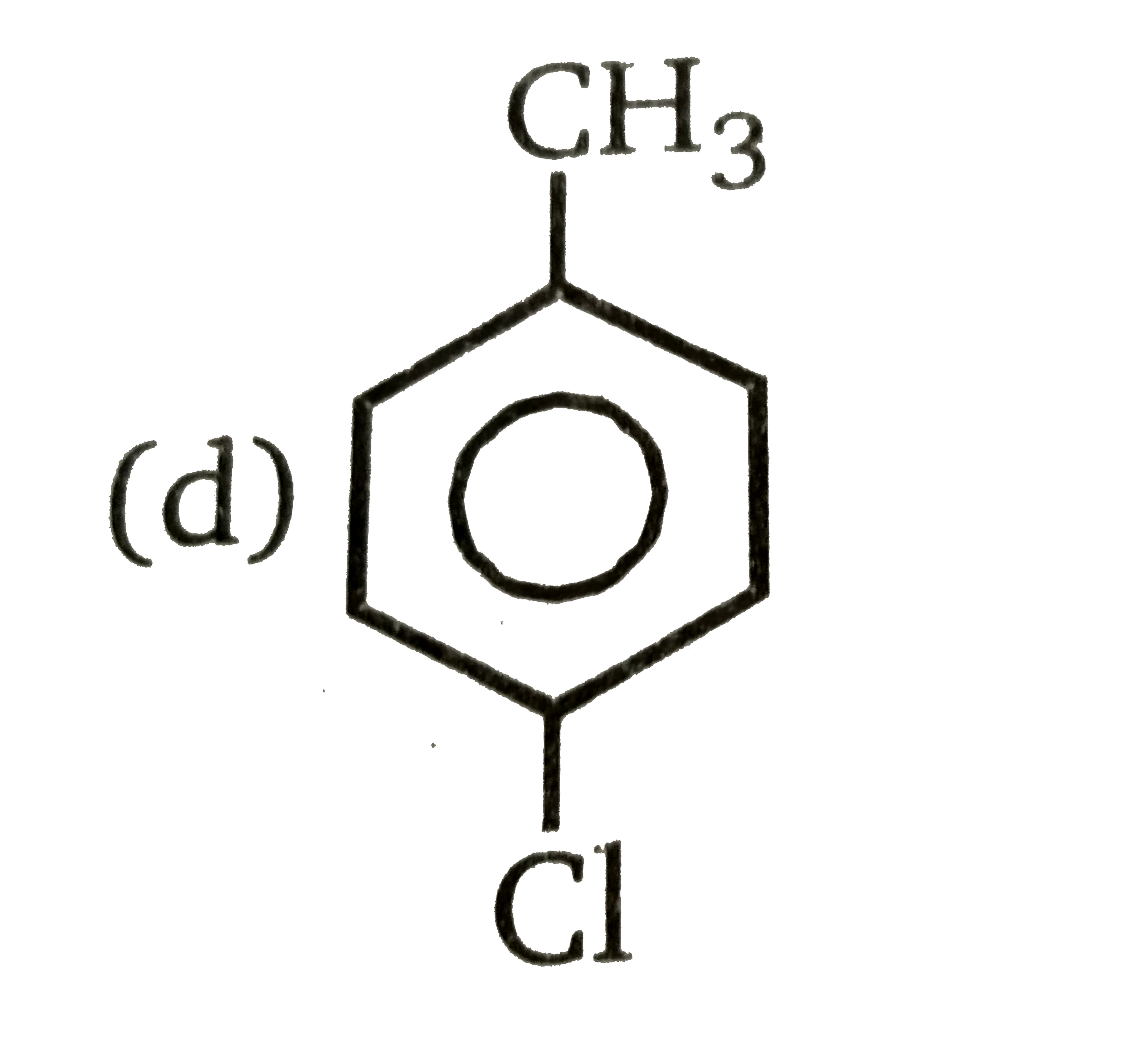The reaction of benzene with chlorine in the presence of iron gives
Benzene hexachloride
Chlorobenzene
Benzyl chloride
Benzoyl chloride
The correct Answer is:B
To solve the question regarding the reaction of benzene with chlorine in the presence of iron, we can follow these steps:
1. Identify the Reactants: The reactants in this reaction are benzene (C6H6) and chlorine gas (Cl2). Iron (Fe) is used as a catalyst.
2. Role of Iron: Iron acts as a Lewis acid in this reaction. It helps in the generation of a more reactive species from chlorine. Iron (III) chloride (FeCl3) is formed when iron reacts with chlorine.
3. Formation of Electrophile: The FeCl3 formed will interact with Cl2. As a Lewis acid, FeCl3 will abstract a chlorine atom from Cl2, generating a positively charged chloronium ion (Cl+). This is the electrophile that will react with benzene.
4. Electrophilic Aromatic Substitution: The generated Cl+ ion will then undergo electrophilic aromatic substitution with benzene. In this process, one of the hydrogen atoms on the benzene ring is replaced by the Cl+ ion.
5. Product Formation: The product of this reaction is chlorobenzene (C6H5Cl).
6. Final Answer: Therefore, the reaction of benzene with chlorine in the presence of iron gives chlorobenzene.
Summary:
The reaction of benzene with chlorine in the presence of iron produces chlorobenzene.
The reaction of benzene with chlorine in the presence of iron produces chlorobenzene.
Topper's Solved these Questions
- HYDROCARBONBook:ERRORLESS Chapter:HYDROCARBONExercise:CRITICAL THINKING (Objective questions)
Explore 24 Videos
- HYDROCARBONBook:ERRORLESS Chapter:HYDROCARBONExercise:JEE SECTION (Only one choice correct answer)
Explore 93 Videos
- HYDROCARBONBook:ERRORLESS Chapter:HYDROCARBONExercise:ORDINARY THINKING (Objective question) (ALKYNE)
Explore 120 Videos
- HALOGEN CONTAINING COMPOUNDBook:ERRORLESS Chapter:HALOGEN CONTAINING COMPOUNDExercise:Critical Thinking (Jee (Advanced) 2018)
Explore 1 Video
- IONIC EQUILIBRIUMBook:ERRORLESS Chapter:IONIC EQUILIBRIUMExercise:JS Jee Section (JEE Advanced (Numeric answer type question))
Explore 1 Video
Similar Questions
Knowledge Check
The reaction of toluene with chlorine in the presence of light gives:
A B
B C
C D
D
The reaction of toluene with chlorine in the presence of iron and in the absence of light yields ………
A B
B C
C DMixture of (b) and (c)
DMixture of (b) and (c)The reaction of toluene with chlorine in the presence of iron and in the absence of light yields ………
A B
B C
C DMixture (b) and (c)
DMixture (b) and (c)
The reaction of toluence with chlorine In this presence
of light gives
View SolutionThe reaction of toluene with chlorine in the presence of ferric chloride gives mainly
View SolutionThe reaction of toluene with chlorine in the presence of ferric chloride gives mainly
View SolutionThe reaction of toluene with chlorine in the presence of FeCl3 gives predominantly
View SolutionThe reaction of toluene with chlorine in presence of FeCl3 gives predominantly
View Solution

